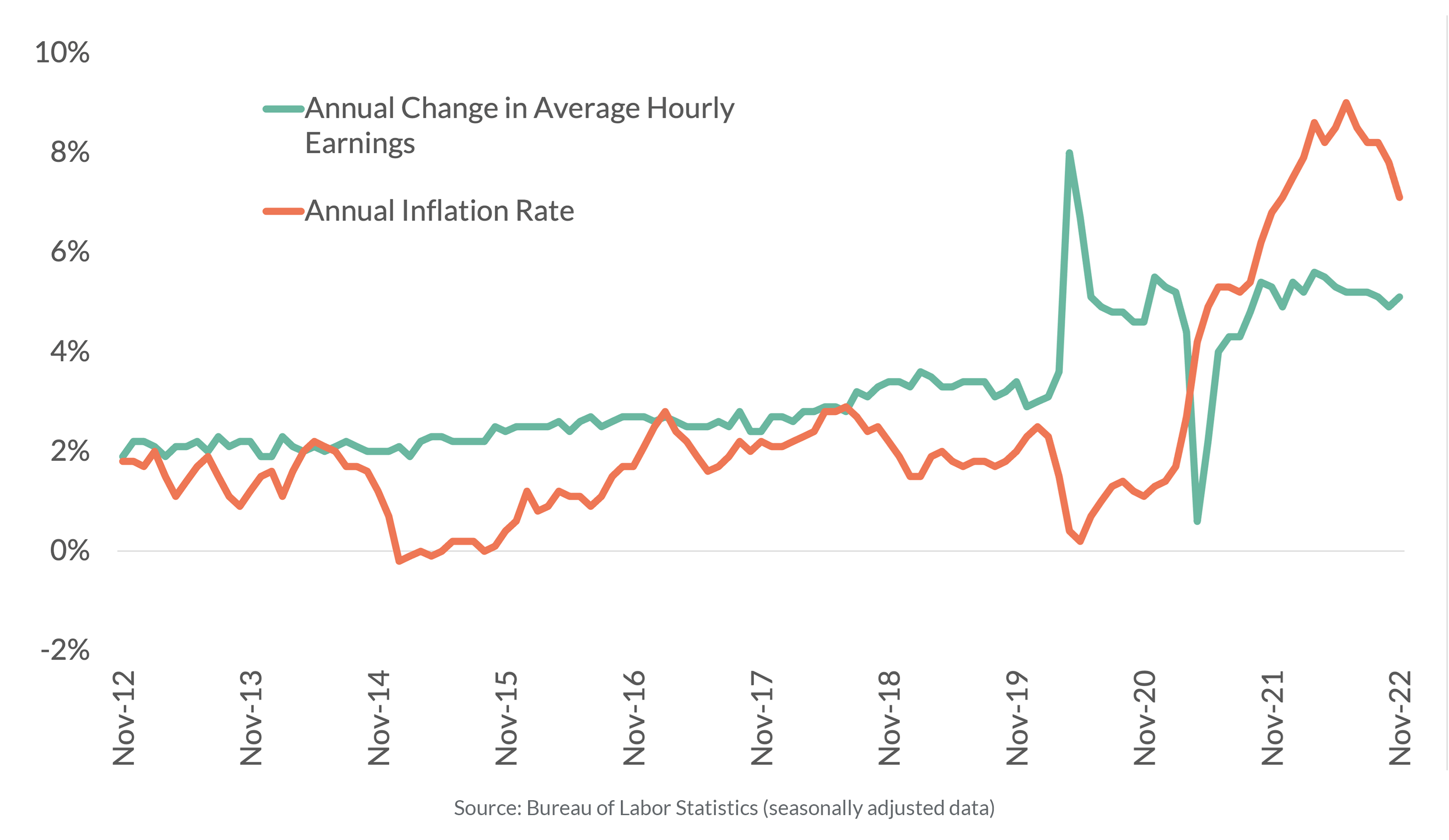Soaring costs for consumer goods and services have created financial pressures for many U.S. households. Even though wages are growing at one of the fastest paces in decades, it hasn’t been enough to keep up with skyrocketing price increases. Over much of the past 10 years, wage growth exceeded or kept pace with inflation. During that period, wages generally increased 2% to 3% annually while the inflation rate remained below 3%, according to data from the Bureau of Labor Statistics. However, all that changed at the onset of the COVID-19 pandemic in early 2020. The nation posted record wage growth of 8% in April 2020, the result of a very tight labor market, as pandemic-related restrictions put many workers on the sidelines. During that period, demand for goods and services dropped dramatically, leading to eroding price increases. Since reaching that milestone in April 2020, prices have been soaring due to pent up demand and supply chain issues, with inflation hitting near 40-year highs over the past year. In November 2022, inflation was up 7.1% on an annual basis, while average hourly earnings of all employees on private nonfarm payroll rose 5.1%. Despite recent wage increases, inflation has wiped out paychecks for many Americans. When taking into account the impact of rising consumer prices, average hourly wages actually declined 2% in the year-ending November.







